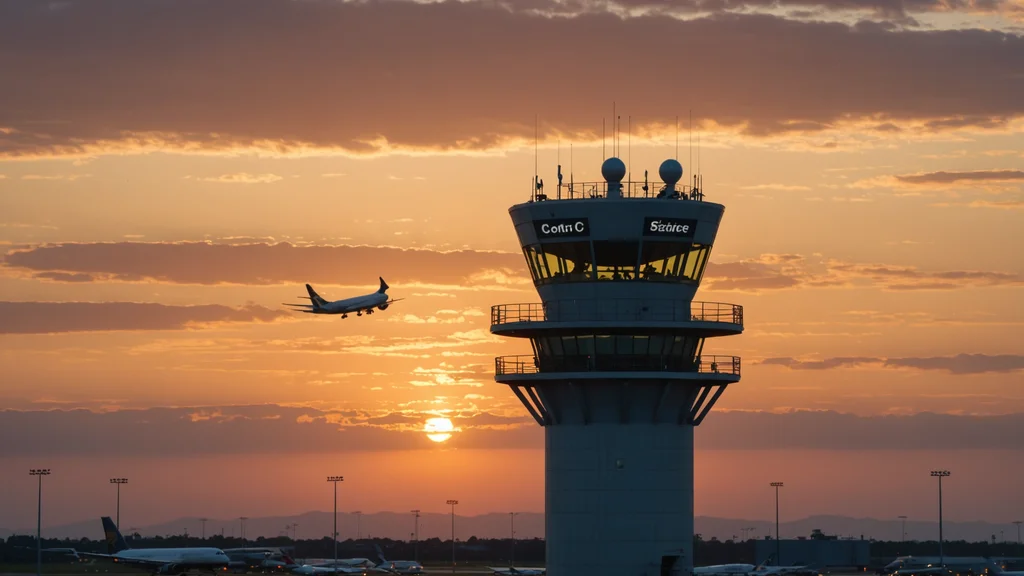In the fast-paced world of air travel, American Airlines is a key player, operating thousands of flights daily. Recently, however, a significant technical issue led to a nationwide groundstop, causing widespread delays for travelers. This incident not only disrupted travel plans for many but also sparked concerns about the operational reliability of one of the largest airlines in the United States.

Understanding the Nationwide Groundstop
A groundstop is a critical protocol initiated by air traffic control (ATC) that pauses all departures at certain airports or across entire regions. This is usually due to severe weather, security threats, or, as we recently witnessed, technical failures.
On the day of the incident, a malfunction in American Airlines’ systems prompted the Federal Aviation Administration (FAA) to issue a groundstop for the airline. This unexpected shutdown affected flights nationwide, leading to a reported 1,200 delayed departures and a staggering 300 flight cancellations.
Airport control tower overseeing air traffic control operations
The Tech Issue Explained
The root cause of the groundstop was identified as a failure in the flight management software used by American Airlines. This software is essential for managing over 6,700 daily flights, including coordinating schedules and gate assignments, as well as handling passenger data.
Although technical glitches can happen in any field, the consequences are particularly severe in aviation. Passengers found themselves stranded in terminals, businesses faced delays in cargo shipments, and airlines had to work closely with ATC to manage the resulting chaos.
For context, American Airlines processed nearly 200 million passengers in the previous year, underscoring how a single technical failure can ripple through their entire operation.
How It Affected Passengers
The groundstop had immediate and often frustrating effects on travelers. Many passengers faced lengthy waits at airports, either stuck on delayed flights or dealing with canceled departures. Communication was problematic, with many left uninformed about rescheduling options. While airlines typically strive to keep travelers updated during disruptions, the scale of this incident led to inevitable breakdowns.
Reports indicated that many faced lengthy lines at customer service desks as they sought information and assistance. Some passengers took to social media to voice their frustrations, which reflected the high expectations of instant communication in today’s digital landscape.
Airlines’ Responses
In response to the crisis, American Airlines acted quickly to address the situation and inform passengers of their rights regarding cancellations and delays. The airline offered options for rebooking and compensation where necessary.
Despite their efforts, many customers felt that the sheer magnitude of the incident made quick resolutions a challenge. However, American Airlines did leverage social media and their website to disseminate timely updates about flight statuses and the ongoing recovery from the technical issue. This proactive communication played a vital role in preserving some level of trust among affected passengers.
Broader Implications for the Airline Industry
The technical issue that triggered the nationwide groundstop brings to light broader concerns within the aviation industry. As airlines become increasingly dependent on technology, the risks associated with potential failures grow.
To navigate these challenges, airlines must ensure their systems are robust enough to withstand disruptions, while also keeping pace with advancements in aviation technology. This incident serves as a reminder of the balance required between operational efficiency and safety within the airspace system.
Key Takeaways
Following this incident, it’s evident that the aviation sector needs to continuously enhance its technical infrastructure. Key steps include investing in backup systems and routinely updating and testing software to reduce the chances of future failures.
Moreover, effective communication during disruptions should be prioritized. Airlines must ensure that passengers receive timely updates regarding delays and cancellations, as understanding the emotional and financial stakes for travelers is vital for maintaining customer relations during crises.
Final Thoughts
The recent nationwide groundstop due to a technical issue at American Airlines serves as a powerful reminder of the complexities and vulnerabilities in modern air travel. The incident disrupted countless travel plans and highlighted the ongoing need for improvement in the aviation sector.
As the airline industry looks ahead, leaders must evaluate their response to this event to enhance protocols and strengthen communication with customers during disruptions. A solid technical foundation will better prepare airlines for unexpected events, ultimately leading to an improved travel experience for all.
While delays and technical issues may always be part of air travel, learning from these challenges is crucial in creating a more resilient and dependable flying experience for passengers.
Comments